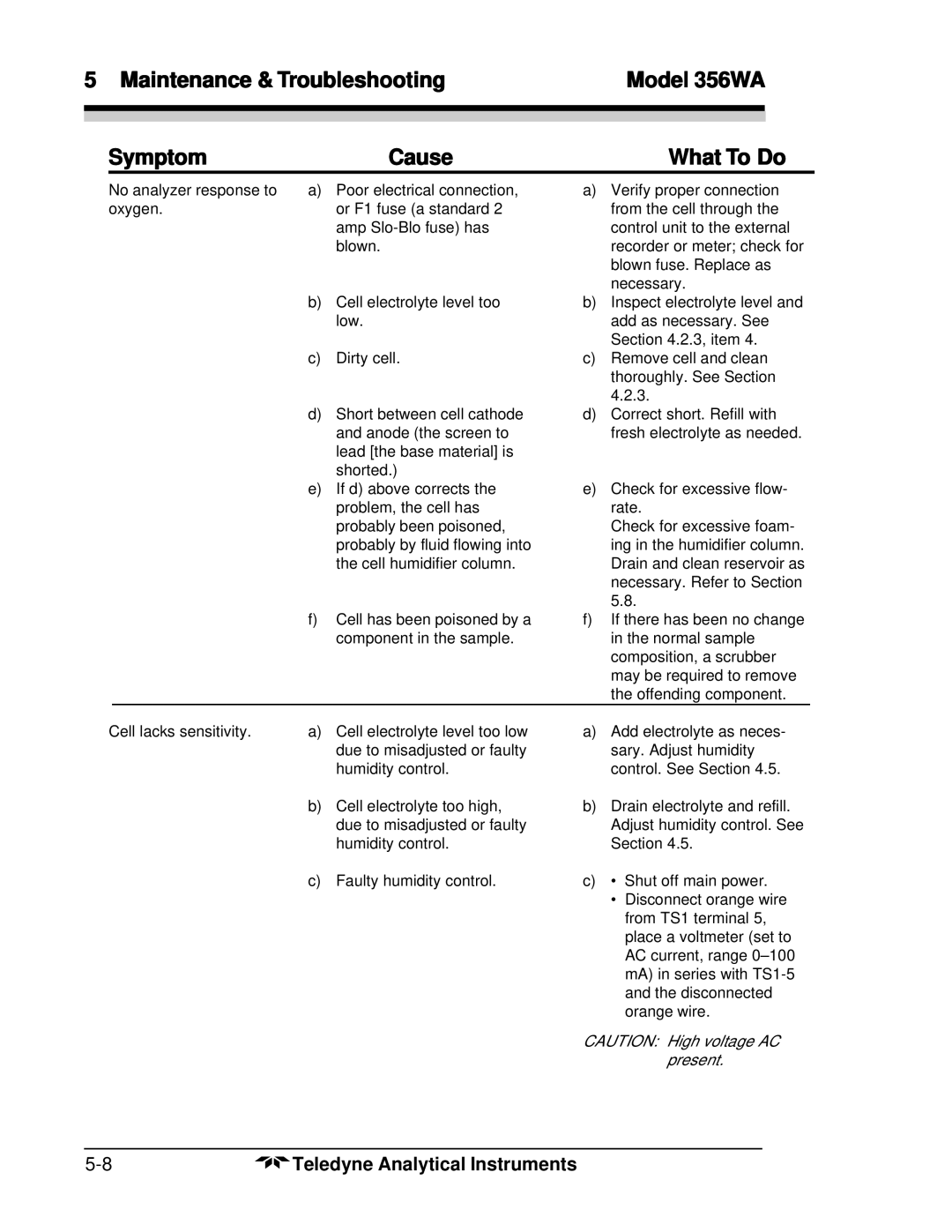
5 Maintenance & Troubleshooting | Model 356WA | |||
|
|
|
| |
|
|
|
|
|
| Symptom | Cause | What To Do | |
No analyzer response to | a) | Poor electrical connection, |
oxygen. |
| or F1 fuse (a standard 2 |
|
| amp |
|
| blown. |
| b) | Cell electrolyte level too |
|
| low. |
| c) | Dirty cell. |
| d) | Short between cell cathode |
|
| and anode (the screen to |
|
| lead [the base material] is |
|
| shorted.) |
| e) | If d) above corrects the |
|
| problem, the cell has |
|
| probably been poisoned, |
|
| probably by fluid flowing into |
|
| the cell humidifier column. |
| f) | Cell has been poisoned by a |
|
| component in the sample. |
a)Verify proper connection from the cell through the control unit to the external recorder or meter; check for blown fuse. Replace as necessary.
b)Inspect electrolyte level and add as necessary. See Section 4.2.3, item 4.
c)Remove cell and clean thoroughly. See Section 4.2.3.
d)Correct short. Refill with fresh electrolyte as needed.
e)Check for excessive flow- rate.
Check for excessive foam- ing in the humidifier column. Drain and clean reservoir as necessary. Refer to Section 5.8.
f)If there has been no change in the normal sample composition, a scrubber may be required to remove the offending component.
Cell lacks sensitivity. | a) | Cell electrolyte level too low |
|
| due to misadjusted or faulty |
|
| humidity control. |
| b) | Cell electrolyte too high, |
|
| due to misadjusted or faulty |
|
| humidity control. |
| c) | Faulty humidity control. |
a)Add electrolyte as neces- sary. Adjust humidity control. See Section 4.5.
b)Drain electrolyte and refill. Adjust humidity control. See Section 4.5.
c)• Shut off main power.
•Disconnect orange wire from TS1 terminal 5, place a voltmeter (set to AC current, range
CAUTION: High voltage AC present.
Teledyne Analytical Instruments |
